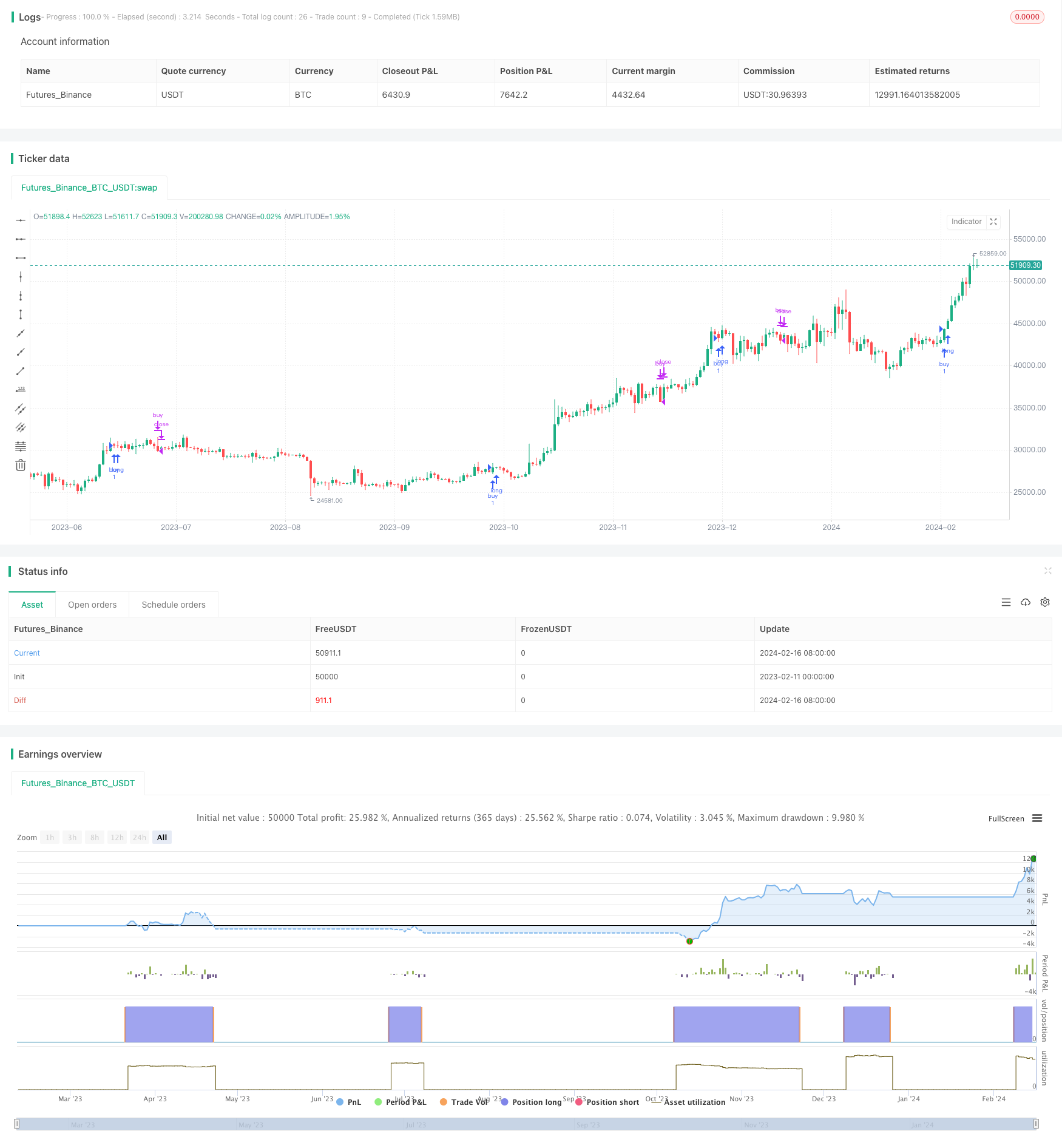Estratégias de negociação baseadas em RSI e RSI estocástico

Visão geral
Esta estratégia de negociação combina o uso de dois indicadores técnicos, o RSI e o RSI Stochastic, para gerar um sinal de negociação. A estratégia usa adicionalmente o movimento do preço da criptomoeda em um período de tempo mais longo para confirmar a tendência, aumentando a confiabilidade do sinal.
Nome da política
Multi Timeframe RSI-SRSI Trading Strategy (Estratégia de negociação RSI-SRSI em Multi-Tempoframe)
Princípio da estratégia
Esta estratégia é baseada no RSI para avaliar a tendência de sobrevenda. Quando o RSI está abaixo de 30, é um sinal de sobrevenda. Quando o RSI está acima de 70, é um sinal de sobrevenda.
A estratégia simultaneamente combina o movimento do preço da criptomoeda em um período de tempo mais alto (por exemplo, a linha de circunferência). O sinal de compra é gerado somente quando o RSI do período de tempo mais alto é superior ao devaluação (por exemplo, 45). Esta configuração filtra os sinais de venda excessiva não persistentes que ocorrem quando o conjunto está em uma tendência de queda.
Os sinais de compra e venda, depois de serem acionados, precisam ser confirmados por um determinado período (por exemplo, 8 linhas K) para evitar a geração de sinais enganosos.
Vantagens estratégicas
- A análise técnica clássica de sobrecompra e sobrevenda usando o RSI
- Combinado com o Stochastic RSI, o indicador identifica o sinal de inversão do RSI em si
- Aplicação de tecnologia de filtragem de múltiplos quadros de tempo para aumentar a qualidade do sinal
Riscos estratégicos e soluções
- Indicadores RSI são propensos a falsos sinais
- Combinação com outros indicadores para filtrar sinais de erro
- Aplicação de tecnologias de identificação de tendências
- A configuração inadequada dos parâmetros de limiar pode gerar sinais de transação excessivos
- Optimizar a combinação de parâmetros para encontrar o melhor parâmetro
- Os sinais de compra e venda precisam de ser confirmados.
- Encontrar um ciclo de confirmação equilibrado, filtrar sinais enganosos e não perder oportunidades
Direção de otimização da estratégia
- Teste mais combinações de indicadores para encontrar um sinal mais forte
- Por exemplo, adicionar MACDs à estratégia
- Experimentar com métodos de aprendizagem de máquina para encontrar o melhor parâmetro
- Automação de busca usando algoritmos genéticos/evolutivos
- Aumentar a estratégia de stop loss para controlar o risco de transações individuais
- Parar quando o preço cai abaixo do suporte
Resumir
A estratégia depende principalmente de RSI e RSI estocástico, dois indicadores de negociação clássicos para gerar sinais de negociação. Ao mesmo tempo, a introdução de um maior período de tempo para a confirmação de tendências, pode filtrar eficazmente os sinais de erro, melhorar a qualidade do sinal.
/*backtest
start: 2023-02-11 00:00:00
end: 2024-02-17 00:00:00
period: 1d
basePeriod: 1h
exchanges: [{"eid":"Futures_Binance","currency":"BTC_USDT"}]
*/
//@version=5
strategy("RSI and Stochatic Strategy", overlay=true, use_bar_magnifier = false)
/////// Inputs ///////////////
// RSI and SRSI
rsiLength = input(14, title="RSI Length")
stochLength = input(14, title="Stochastic Length")
kSmooth = input(3, title="K Smooth")
dSmooth = input(3, title="D Smooth")
//////// thresholds ///////////////
st_low = input(5, title="Low SRSI") // stochastic RSI low -- prepare to sell
st_hi = input(50, title="High SRSI") // stochastic RSI high -- prepare to buy
diff = input(5, title="difference") // minimum change in RSI
// inval_diff = input(12, title="difference") // invalidation difference: change in the oposite direction that invalidates rsi falling/rising
rsi_low = input(30, title="Low RSI") // RSI considered low
rsi_hi = input(60, title="High RSI") // RSI considered high
rsi_ht_hi = input(45, title="High higher time frame RSI") // RSI in higher time frame considered high
/// buy trigger duration
tr_dur = input(8, title="Trigger duration")
low_dur = input(20, title="Monitoring last low")
///////////////// Higher time frame trend ///////////////////
// higher time frame resolution
res2 = input.timeframe("W", title="Higher time-frame")
// Input for the ticker symbol, default is an empty string
// For instance we could monitor BTC higher time frame trend
symbol = input("BTC_USDT:swap", "Input Ticker (leave empty for current)")
// Determine the symbol to use
inputSymbol = symbol == "" ? syminfo.tickerid : symbol
//////////////////////////////////////////////////////////
// Calculate RSI //
rsi = ta.rsi(close, rsiLength)
// Calculate Stochastic RSI //
rsiLowest = ta.lowest(rsi, stochLength)
rsiHighest = ta.highest(rsi, stochLength)
stochRsi = 100 * (rsi - rsiLowest) / (rsiHighest - rsiLowest)
// Apply smoothing
K = ta.sma(stochRsi, kSmooth)
D = ta.sma(K, dSmooth)
// Higher time Frame RSI
cl2 = request.security(inputSymbol, res2, close)
rsi2 = ta.rsi(cl2, 14)
// SRSI BUY/SELL signals
sell_stoch = (ta.lowest(K, tr_dur) < st_low) or (ta.highest(rsi, tr_dur) < rsi_low)
buy_stoch = ((ta.lowest(K, tr_dur) > st_hi) or (ta.lowest(rsi, tr_dur) > rsi_hi)) and (rsi2 > rsi_ht_hi)
// valitation / invalidation sell signal
ll = ta.barssince(not sell_stoch)+1
sell_validation = (ta.highest(rsi, ll)>rsi[ll]+diff and rsi < rsi[ll]) or (rsi < rsi[ll]-diff)
// valitation / invalidation buy signal
llb = ta.barssince(not buy_stoch)+1
buy_validation = (ta.lowest(rsi, llb)<rsi[llb]-diff and rsi > rsi[llb]) or (rsi > rsi_hi and rsi - rsi[tr_dur] > 0)
sell_signal = sell_stoch and sell_validation
buy_signal = buy_stoch and buy_validation
// Define the start date for the strategy
startYear = input(2019, "Start Year")
startMonth = input(1, "Start Month")
startDay = input(1, "Start Day")
// Convert the start date to Unix time
startTime = timestamp(startYear, startMonth, startDay, 00, 00)
// Define the end date for the strategy
endYear = input(2030, "End Year")
endMonth = input(1, "End Month")
endDay = input(1, "End Day")
// Convert the end date to Unix time
endTime = timestamp(endYear, endMonth, endDay, 00, 00)
if true
if buy_signal
strategy.entry("buy", strategy.long, comment = "Buy")
if sell_signal
strategy.close("buy", "Sell")